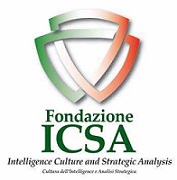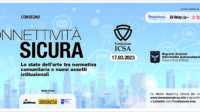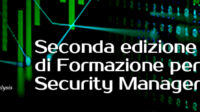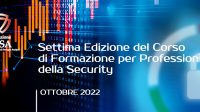La guerra russo ucraina ha rimesso in scena la questione dell’Uranio Impoverito, alimentando le preoccupazioni del sentire collettivo sui danni che tale agente può provocare, in particolare quelli relativi all’insorgenza di gravi patologie tumorali.
Siamo ancora in presenza di un tentativo di disorientare e disinformare il cittadino sulla pericolosità di un tipo di munizionamento che non ha significativi effetti collaterali rispetto a quelli cinetici, tipici delle ordinarie armi.
ICSA pertanto, a beneficio di chi volesse saperne di più attraverso la consultazione di fonti scientifiche indipendenti e prestigiose, ha raccolto la più significativa letteratura sull’argomento.
Francesco Troiani: Ciclo del combustibile nucleare e rifiuti radioattivi
ENEA Roma 2009
Institute of Medicine of the national academies; Committee on Gulf War and Health: Updated Literature Review of Depleted Uranium 2008
Mandelli F, Biagini C, Grandolfo M, Mele A, Onofrio G, Tricarico VA. Seconda relazione della Commissione istituita dal Ministero della Difesa sull’incidenza di neoplasie maligne tra i militari impiegati in Bosnia e Kosovo. Epidemiol Prev 2001; 25(3).
Royal Society and Medical research council: The health effects of depleted uranium munitions. Document 6/02 March 2002
Pacillo Nicola, Poma Carlo: Uranio impoverito. ENEA Roma 2000
UNEP. Depleted Uranium in Serbia and Montenegro – Post-conflict environmental assessment in the Federal Republic of Yugoslavia. Technical Report. United Nations Environment Programme, Geneva, April 2002
Busby, C., Williams, D., 2007. On the UNEP and Green Audit Measurements of Uranium in Water and Soil Samples in Lebanon.
Bešića L, Muhovićb I, Mrkulića F, Spahića L, Omanovića A, Kurtovic-Kozarica A (2018): Meta-analysis of depleted uranium levels in the Middle East region. Journal of Environmental Radioactivity 192 (2018)
Banducci F, Bonsignore M Zagarella F (2011): Scheda Afghanistan. Descrizione delle verifiche ambientali a tutela del personale in missione nel teatro operativo dell’ Afghanistan. Roma, Stato Maggiore Della Difesa, Ispettorato Generale della Sanità Militare, Ufficio Contenzioso Fattori di Rischio Ambientale
Lopez M (2013): Considerazioni preliminari relative alla causa Di Giacobbe Guido c/ Ministero della Difesa Trib. Roma – Sez. II Civile – R. G. 30670/2011
Relazione finale della Commissione istituita dal Ministro della Difesa sull’incidenza di neoplasie maligne tra i militari impiegati in Bosnia e Kosovo. www.difesa.it/approfondimenti/…/2271_relazione_finale.pdf
Abeloff MD, Armitage JO, Niederhuber JE, Kastan MB, McKenna WG (eds): Abeloff’s Clinical Oncology (4th ed.). Churchill Livingstone, Philadelphia, 2008
Agha, A.R., El-Mongy, S.A., Kandel, A.E., 2011. Assay of uranium isotopic ratios 234 U/238 U, 235 U/238 U in bottom sediment samples using destructive and non destructive techniques (Nasser lake). Proceedings of the 8th Conference on Nuclear and Particle Physics 20–24 Nov. 2011, Hurghada, Egypt.
Al-Dujaily, E.A., Al-Janabi, A.A., Pierscionek, T., Yasseen, A.A., 2008. High prevalence of HER-2/neu overexpression in female breast cancer among an Iraqi population exposed to depleted uranium. J. Carcinog. 7.
Al-Kinani, A.T., 2006. Depleted uranium in the food chain in south of Iraq. Iranian J. Radiat. Res. 4 (3.
Al-Kinani, A.T., Al Saeidi, A.S., Al-Anni, S., 2005. Investigation of depleted uranium contamination in south west of Iraq. Iranian J. Radiat. Res. 3 (3).
Al-Saad, K.A., Amr, M.A., Ismail, A., Helal, A.I., 2010. Determination of depleted uranium in the presence of natural uranium in environmental soil samples by ICP-MS after sequential extraction. J. Environ. Chem. Ecotoxicol. 2 (4).
Asic, A., Kurtovic-Kozaric, A., Besic, L., Mehinovic, L., Hasic, A., Kozaric, M., Hukic, M., Marjanovic, D., 2017. Chemical toxicity and radioactivity of depleted uranium: the evidence from in vivo and in vitro studies. Environ. Res. 156.
Astakhova LN, Anspaugh LR, Beebe GW, et al.. Chernobyl-related thyroid cancer in children of Belarus: a case-control study. Radiat Res 1998; 150.
Bem, H., Bou-Rabee, F., 2004. Environmental and health consequences of depleted uranium use in the 1991 Gulf War. Environ. Int. 30 (1).
Bešić L., Muhovic I., Asic, A., Kurtovic-Kozaric, A., 2017. Meta-analysis of depleted uranium levels in the Balkan region. J. Environ. Radioact. 172.
Bešić L. et al. Journal of Environmental Radioactivity 192 (2018)
Briner, W.E., 2006. The evolution of depleted uranium as an environmental risk factor: lessons from other metals. Int. J. Environ. Res. Public Health 3 (2).
Brown M. Toxicological assessment of Gulf war veterans. Phil Trans R Soc B 2006; 361.
Bullman TA, Mahan CM, Kang HK, Page WF. Mortality in US army Gulf war veterans exponed to 1991 Khamisiryah chemical munitions destruction. Am J Public Health 2005; 95(8).
Busby, C., Williams, D., 2006a. Evidence of Enriched Uranium in Guided Weapons Employed by the Israeli Military in Lebanon in July 2006: Preliminary Note. Occasional paper, 6.
Canellos GP, Lister TA, Sklar JL. The Lymphomas. Philadelphia, Saunders,1998
Cheng YS, et al. Physicochemical characterization of Capstone depleted uranium aerosols particle size distribution as a function of time. Health Phys 2009; 96.
CHPPM. Health risk assessment consultation No. 26-MF-7555-00D, Depleted uranium-Human exposure assessment and health risk characterization in support of the environmental exposure report “Depleted uranium in the Gulf” of the Office of the Special Assistant to the Secretary of Defense for Gulf War Illnesses, Medical Readiness, and Military Deployments (OSAGWI), OSAGWI Levels I, II, and III Scenarios, 2000, 15 September
Craft, E.S., Abu-Qare, A.W., Flaherty, M.M., Garofolo, M.C., Rincavage, H.L., Abou-Donia, M.B., 2004. Depleted and natural uranium: chemistry and toxicological effects. J. Toxicol. Environ. Health B 7 (4).
Danesi, P.R., Telleria, D.M., 2010. Radiological conditions at four selected sites in south Iraq with residues of depleted uranium. In: Proceedings of IRPA12: 12. Congress of the International Radiation Protection Association: Strengthening Radiation Protection Worldwide-highlights, Global Perspective and Future Trends.
De Vita VT, Lawrence TS, Rosenberg SA (eds). De Vita, Helman, and Rosenberg’s Cancer Principles & Practice of Oncology. Wolters Kluwer / Lippincott Williams & Wilkins, Philadelphia, 2008
Domingo, J.L., 2001. Reproductive and developmental toxicity of natural and depleted uranium: a review. Reprod. Toxicol. 15 (6).
Durakovic, A., 2005. The quantitative analysis of uranium isotopes in the urine of the civilian population of eastern Afghanistan after Operation Enduring Freedom. Military Med 170 (4).
Ebaid, Y.Y., El-Tahawy, M.S., El-Lakany, A.A., Garcia, S.R., Brooks, G.H., 2000. Environmental radioactivity measurements of Egyptian soils. J. Radioanal. Nucl. Chem. 243 (2).
El Samad, O., Nsouli, B., Nasr, H., Assi, M., Abou-Rjeili, R., El-Akoum, M., Reslan, A., Saate, M., Jeaid, H., Reslan, H., 2007. Investigation of the possible depleted uranium contamination in Lebanon after the 2006 summer Israeli attack. Leban. Sci. J. 8 (1).
El-Aassy, I.K., El-Feky, M.G., Issa, F.A., Ibrahim, N.M., Desouky, O.A., Khattab, M.R., 2015. Characterization of groundwater and uranium isotopic ratios (234U/238U) in some dugged and drilled wells from southwestern Sinai. Egypt. Water Utility J 9.
Elliot, T., Bonotto, D.M., Andrews, J.N., 2014. Dissolved uranium, radium and radon evolution in the Continental Intercalaire aquifer, Algeria and Tunisia. J. Environ. Radioact. 137.
Fleitmann, D., Burns, S.J., Mangini, A., Mudelsee, M., Kramers, J., Villa, I., Neff, U., Al-Subbary, A.A., Buettner, A., Hippler, D., Matter, A., 2007. Holocene ITCZ and Indian monsoon dynamics recorded in stalagmites from Oman and Yemen (Socotra). Quat. Sci. Rev. 26 (1–2).
Gombeau, K., Pereira, S., Ravanat, J.L., Camilleri, V., Cavalie, I., Bourdineaud, J.P., Adam-Guillermin, C., 2016. Depleted uranium induces sex-and tissue-specific methylation patterns in adult zebrafish. J. Environ. Radioact. 154.
Gray GC, Coate BD, Anderson CM, et al. The postwar hospitalization experience of U.S. veterans of the Persian Gulf War. N Engl J Med 1996; 335(20).
Gustavsson P, Talbāc M, Lundin A, Lagercrantz B, Gyllestad PE, Fornell L. Incidence of cancer among Swedish military and civil personnel involved in UN mission in the Balkans 1989-1999. Occup Envirom Med 2004; 61(2).
Hao, Y., Ren, J., Liu, J., Yang, Z., Liu, C., Li, R., Su, Y., 2013. Immunological changes of chronic oral exposure to depleted uranium in mice. Toxicol 309.
Harley NH, Foulkes EC, Hilborne LH, et al. A review of the scientific literature as it pertains to Gulf war illnesses, Vol. 7, Depleted Uranium. RAND, Corporation National Defense Research Institute, Washington, USA 1999
Harley, N.H., Foulkes, E.C., Hilborne, L.H., Hudson, A., Anthony, C.R., 1999. A review of the scientific literature as it pertains to Gulf war illnesses. Volume 7 depleted uranium (No. RAND-MR-1018/7-OSD). Rand national defense research inst santa monica Ca. Health Phys. Society Specialists in Radiation Safety 2010 Depleted Uranium. McLean.
Higgy, R.H., 2000. Natural radionuclides and plutonium isotopes in soil and shore sediments on Alexandria Mediterranean Sea coast of Egypt. Radiochim. Acta 88 (1).
Hooper, F.J., Squibb, K.S., Siegel, E.L., McPhaul, K., Keogh, J.P., 1999. Elevated urine uranium excretion by soldiers with retained uranium shrapnel. Health Phys. 77 (5).
Ibrahim, E.M., Hassan, S.F., El Feky, M.G., 2016. U-series radionuclides disequilibria as indication of recent U-mobilization in the metamorphosed sandstone, Wadi Sikait, south Eastern desert. Egypt. Int. J. Recent Sci. Res 7 (2).
Kahle, D., Wickham, H., 2013. ggmap: spatial Visualization with ggplot2. R J. 5 (1).
Kang HK, Bullman TA. Mortality among U.S. veterans of the Persian Gulf war. N Engl J Med 1996; 335(20).
Kang HK, Bullman TA. Mortality among US veterans of the Persian Gulf war: 7-year follow-up. Am J Epidemiol 2001; 154(5).
Khater, A.E., Higgy, R.H., Pimpl, M., 2001. Radiological impacts of natural radioactivity in Abu-Tartor phosphate deposits. Egypt. J. Environ. Radioact 55 (3).
Khattab, M.R., 2016. Determination of uranium concentrations and 234U/238U activity ratio in some granitic rock samples by alpha spectrometry: application of a radiochemical procedure. Radiat. Protection Environ 39 (3).
Knoke JD, Gray GC, Garland FC. Testicular cancer and Persian Gulf war service. Epidemiology 1998; 9(6).
Levine PH, Young HA, Simmens SJ et al. It testicular cancer related to Gulf war development. Evidence from a pilot population-based study of Gulf war era veterans and cancer registries. Mil Med 2005; 170(2).
Littleton, B., 2006. Depleted Uranium Technical Brief. US Environ. Protection Agency. Office Radiat. Indoor Air Radiat. Protection Div., Washington, DC. Luckett, L.W., 2006. Radiological conditions in areas of Kuwait with residues of depleted uranium. Health Phys. 90 (2).
Mcfarlane GJ, Thomas E, Cherry N. Mortality among UK Gulf War veterans. Lancet 2000; 356 (9223).
Mcfarlane GJ, Hotopf M, Maconochie N, Blatchley N, Richards A, Lung M. Long-term mortality among Gulf war veterans is there a relationship wich experiences during deployment and subsequent morbility. Int J Epidemiol 2005; 34(6).
Macfarlane GJ, Biggs AM, Maconochie N, Horoprof M, Doyle B, Lant M. Incidence of cancer among UK Gulf war veterans cohort study. EMJ 2003; 327(7428).
McDiarmid, M.A., Engelhardt, S.M., Oliver, M., 2001a. Urinary uranium concentrations in
an enlarged Gulf War veteran cohort. Health Phys. 80 (3).
McDiarmid, M.A., Engelhardt, S., Oliver, M., Gucer, P., Wilson, P.D., Kane, R., Kabat, N., Kaup, B., Anderson, L., Hoover, D., Brown, L., Handwerger, B., Albertini, R.J., Jacobson-Kram, D., Thorne, C.D., Squibb, K.S., 2004. Health effects of depleted uranium on exposed Gulf War veterans: a 10-year follow-up. J. Toxicol. Environ. Health A 67 (4).
McDiarmid, M.A., Gaitens, J.M., Hines, S., Condon, M., Roth, T., Oliver, M., Gucer, P., Brown, L., Centetno, J.A., Dux, M., Squibb, K.S., 2017. The US Department of Veterans’ Affairs depleted uranium exposed cohort at 25 Years: longitudinal surveillance results. Environ. Res. 152.
McDiarmid, M.A., Gaitens, J.M., Hines, S., Condon, M., Roth, T., Oliver, M., Gucer, P., Brown, L., Centeno, J.A., Streeten, E., Squibb, K.S., 2015. Biologic monitoring and surveillance results for the department of veterans affairs’ depleted uranium cohort: lessons learned from sustained exposure over two decades. Am. J. Ind. Med. 58 (6).
McDiarmid, M.A., Keogh, J.P., Hooper, F.J., McPhaul, K., Squibb, K., Kane, R., DiPino, R., Kabat, M., Kaup, B., Anderson, L., Hoover, D., Brown, L., Hamilton, M., Jacobson-Kram, D., Burrows, B., Walsh, M., 2000. Health effects of depleted uranium on exposed Gulf War veterans. Environ. Res. 82 (2).
McDiarmid, M.A., Squibb, K., Engelhardt, S., Oliver, M., Gucer, P., Wilson, P.D., Kane, R., Kabat, M., Kaup, B., Anderson, L., Hoover, D., Brown, L., Jacobson-Kram, D., 2001b. Surveillance of depleted uranium exposed Gulf War veterans: health effects observed in an enlarged “friendly fire” cohort. J. Occup. Environ. Med. 43 (12).
Milačić, S., Petrović, D., Jovičić, D., Kovačević, R., Simić, J., 2004. Examination of the health status of populations from depleted-uranium-contaminated regions. Environ. Res. 95 (1).
Opinion on the Enviromental and Health Risks Posed by Depleted Uranium, European Union, 2010. ISSN 1831-4775
Parkhurst Ma, Guilmette RA. Conclusion of the Capstone depleted uranium aerosol characterization, and risk assessment study. Health Phys 2009; 96.
Peragallo MS, Lista F, Sarnicola G, et al.. Cancer surveillance in Italian army peacekeeping troops deployed in Bosnia and Kosovo, 1996-2007: preliminary results. Cancer Epidemiol 2010; 34.
Papastefanou, C., 2002. Depleted uranium in military conflicts and the impact on the environment. Health Phys. 83 (2).
Peragallo MS, Urbano F, Lista F, et al.. Evaluation of cancer surveillance completeness among the Italian army personnel by capture-recapture methodology. Cancer Epidemiol 2001; 35.
Rogojin, V., Carmi, I., Kronfeld, J., 1997. 14 C and 234 U-Excess dating of groundwater in the haifa bay region Israel. Radiocarbon 40 (2).
Sabbatini V. Indagine ambientale sull’impiego del DU nell’area del contingente italiano in Kosovo. Scuola Interforze NBC, Atti del IX Seminario NBC, Rieti, maggio 2000
Sabbatini V. Controlli e valutazioni di radioprotezione nelle aree dei contingenti italiani in Bosnia e Kosovo, Centro Studi e Ricerche di Sanità e Veterinaria, Atti del Workshop su “Uranio depleto e marcatori di predisposizione alle radiazioni ionizzanti”, Scuola Tramat, Roma 1 giugno 2001
Saleh, I.H., Abdel-Halim, A.A., 2016. Determination of depleted uranium using a highresolution gamma-ray spectrometer and its applications in soil and sediments. J. Taibah Univ. Sci. 10 (2).
Storm HH, Jørgensen HO, Kejs AMT, Engholm G. Depleted uranium and cancer in Danish Balkan veterans deployed 1992-2001. Eur J Cancer 2006; 42(14).
Stern ST, McNeil SE. Nanotechnology safety concerns revisited. Toxicological Science 2007; 101.
Peakman M, Skowera A, Hotopf M. Immunological dysfunction, vaccination and Gulf War illness. Philos Trans R Soc Lond B Biol Sci 2006; 361.
South, A., 2011. Rworldmap: a new R package for mapping global data. R J. 3 (1).
Squibb, K.S., Leggett, R.W., McDiarmid, M.A., 2005. Prediction of renal concentrations of depleted uranium and radiation dose in Gulf War veterans with embedded shrapnel. Health Phys. 89 (3).
Team, R.C., 2013. R: a Language and Environment for Statistical Computing. R. Found. Stat. Comp, Vienna, Austria Accessed 17 February 2018.
The Royal Society 2001. The health hazards of depleted uranium munitions Part I: likely exposure levels, radiological effects, epidemiology, 80 pp. London, UK: The Royal Society. www.royalsoc.ac.uk.
The Royal Society 2001. The health hazards of depleted uranium munitions Part I: likely exposure levels, radiological effects, epidemiology, 80 pp. London, UK: The Royal Society. www.royalsoc.ac.uk.
The Royal Society 2002bThe health hazards of depleted uranium munitions Part II: effects from chemical toxicity, environmental impact and responses to Part I, 134 pp. London, UK: The Royal Society.
Uddin, S., Aba, A., Fowler, S.W., Behbehani, M., Ismaeel, A., Al-Shammari, H., Alboloushi, A., Mietelski, J.W., Al-Ghadban, A., Al-Ghunaim, Khabbaz, A., Alboloushi, O., 2015. Radioactivity in the Kuwait marine environment—baseline measurements and review. Mar. Pollut. Bull. 100 (2).
United Nations Development Programme, 2003. Depleted Uranium in Bosnia and Herzegovina – Post Conflict Environmental Assessment. United Nations Development Programme, Geneva.
WHO. Depleted Uranium, Sources, Exposure and Health Effects, WHO, Geneva 2001
Yousefi, H., Najafi, A., 2013. Assessment of depleted uranium in South-Western Iran. J. Environ. Radioact. 124.




